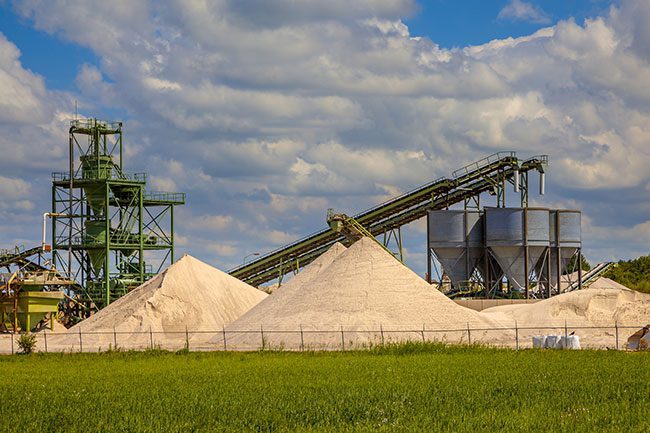Telescoping Stackers, Radial Conveyors & Other Conveyances

When it comes to moving large amounts of extremely heavy material, there are no heavy machine tools that compare to the two known as telescoping stackers and conventional radial conveyors. These machines take a lot of abuse from Mother Nature and the operating environment. For this reason, they engineered and built for durability in the field as well as a long-term useful life. Both of these types of heavy equipment have their benefits and disadvantages over the other. Here is a quick rundown on the differences:
Telescoping stackers
More colloquially known by its users as a “boom lifts” or “cherry pickers,” these pieces of heavy equipment have seen an enormous amount of duty over the years in a wide variety of industries. A telescoping stacker combines the best features of a forklift and a crane. Not only does it provide the capability to move large loads from one place to another but also allows those loads to be positioned much further away from the cab of the truck than a conventional forklift. In addition, a number of specialized attachments can be added to the end of the boom increasing the overall versatility of this piece of equipment.
Telescoping stackers do have to be manned and are therefore somewhat more costly to operate on than unmanned radial conveyors. The need for a human operator means that there are times when the unit will not be operated at all. Boom lifts are somewhat restrained by the laws of physics as they cannot indiscriminately move a large load without paying attention to its own footprint. The operator must know the limits of the machine and operate within them. Still, a telescoping stacker offers a reliable means to move large quantities of goods on an ad hoc basis in various localities. FTP companies with multiple locations that do not always need a large freight mover on site choose stackers as the optimal choice.
Conventional radial conveyors
If your company needs to move even larger amounts of bulk material in a relatively well-defined and localized manner, a radial conveyor is probably the heavy machinery that will best suit your needs. Conventional radial conveyors are industrial behemoths that can reach lengths of 10 miles or more. Even on a much smaller scale, they are able to transport an incredible variety and tonnage of materials through changes in elevation and direction in a highly cost-effective manner. Radial conveyors also incorporate a number of safety mechanisms to warn workers when the machine is about to start or if a problem has arisen.
Conveyor systems are used in a variety of industries from the relatively small ones used to sort and pass light-weight mail in the postal industry to the very high-strength machines that can transport tons of ore from a mine into an industrial crusher. In addition, a number of specialized radial conveyors have been designed and manufactured to accomplish such tasks as weighing finished goods for quality control purposes as they pass into a warehouse or as “people movers” that one can find in almost any airport. On an ROI basis, conventional radial conveyors are an excellent investment if the right use can be found for them. These relatively large machines are not particularly easy or inexpensive to move which devalues their overall versatility.
Other types of conveyance systems
Additional functionality can be built into static and dynamic conveyor systems. For example, moving bed heat exchangers (MBHEs) can apply a fairly well-defined amount of heat to a substrate being carried on the conveyor. This process eliminates the need for more expensive heating machinery at the end of the conveyance. Similarly, chain conveyor systems can haul parts through paint rooms and other spaces where the parts are cleaned or have other types of coatings applied to them.
Screw conveyors are another type of bulk handling machine but one that is more well-suited to moving loose items such as grains, solid waste and boiler ash even at an uphill angle. Also known as augers, these machines are intensively used throughout the world to move water from rivers into rice paddies, terraced farms and mountain fields.They still operate on principles developed over 2,000 years ago proving that you can’t keep a good idea down.
For more information on determining the best heavy machine tools and conveyors for your needs, please contact us at Swanton Welding Company Inc. We custom design and fabricate a wide variety of specialized heavy machinery to the highest industry standards. For generalized information, you can visit us online at SwantonWeld.com or reach us directly at 419.826.4816 to have your more specific questions answered.

